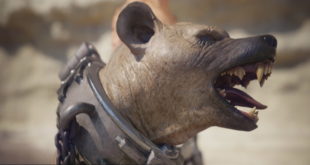Spriter is a modular 2D animation tool designed specifically for use with games. It’s been used in projects such as Don’t Starve’s Mod Kit, Gunhouse, Crea and HeroGenerations.
Its game development-tailored features enable developers to synchronise sound effects and object spawning, trigger events, or change the values of variables with an animation. It also lets users add and animate collision boxes and spawning or anchor points.
Another feature is the ability to export animations as animated GIFS, sequential image PNGs or Sprite sheets, at any FPS. Brash Monkey’s Mike Parent, who co-created the tool with Edgar Muniz, claims it can help decrease development time, reduce file size and increase animation quality.
“The full value of Spriter comes when using a Spriter implementation to actually recreate the animations in real-time from the Spriter file data and the images you used to create your animations,” says Parent.
“Modular animation was used extensively by classic console games for giant bosses that covered the screen, and later for gorgeous 2D games such as Odin Sphere and Muramasa.”
The tool is available in two versions, free and pro. For no cost, developers get access to features such as onion skinning, inverse kinematics, GIF exports, sequential PGNs, and animations can also be kept as Spriter files and used in free or commercial games, animations or art packs.
Pro meanwhile offers game specific features like points, collision boxes, event triggers, sound effect triggering and variables. It also offers the full editing of character maps, which lets users tell the tool to hide or replace images on the fly, ideal for allowing players to customise their appearance.
Spriter, says Parent, is ideally used for 2D games after smooth animations but with reduced memory demands.
“Even if you were using pre-rendered full frame animations from a 3D or vector program, Spriter Pro can be used to perfect the timing and placement of each animation frame,” he explains. “This, along with animating collision boxes, spawning points etcetera can be an invaluable time saver and can make tweaking how your game plays much more intuitive and enjoyable.”
Parent says one of the key elements of Spriter compared to other animation tools is the ability to animate without using bones. He claims it’s “unintuitive” to use bones when animating UI elements and explosions, for example.
“You can even change the skeletal hierarchy midway through an animation to animate things like a character removing a hat or switching their sword hand,” states Parent. “A single animation can also combine skeletal and non-skeletal methods.”
Brash Monkey is working on a number of major new features for Spriter. It’s currently developing a fully featured reference Spriter implementation to make it easier for developers to port to their favourite language or authoring system. It also plans to implement the ability to deform and warp images, both with and without bones.

 MCV/DEVELOP News, events, research and jobs from the games industry
MCV/DEVELOP News, events, research and jobs from the games industry


